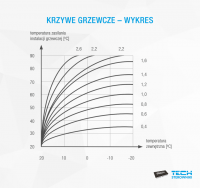Hello,
My question is purely theoretical. I'm not sure if it's the right bookmark, but let's try.
I need information, as in an engineering way (because it is possible to calculate mathematically this integral) how to move the curve of the heating curve to reduce the heating costs by a specific%.
I assume that the field under the curve graph determines the heating costs. Let's say I choose a heating curve of 1.2 and I want to move it so that the heating cost is reduced by 10%. Is there any simple way to do this without resorting to integration?
Thank you in advance for your response!
My question is purely theoretical. I'm not sure if it's the right bookmark, but let's try.
I need information, as in an engineering way (because it is possible to calculate mathematically this integral) how to move the curve of the heating curve to reduce the heating costs by a specific%.
I assume that the field under the curve graph determines the heating costs. Let's say I choose a heating curve of 1.2 and I want to move it so that the heating cost is reduced by 10%. Is there any simple way to do this without resorting to integration?
Thank you in advance for your response!



